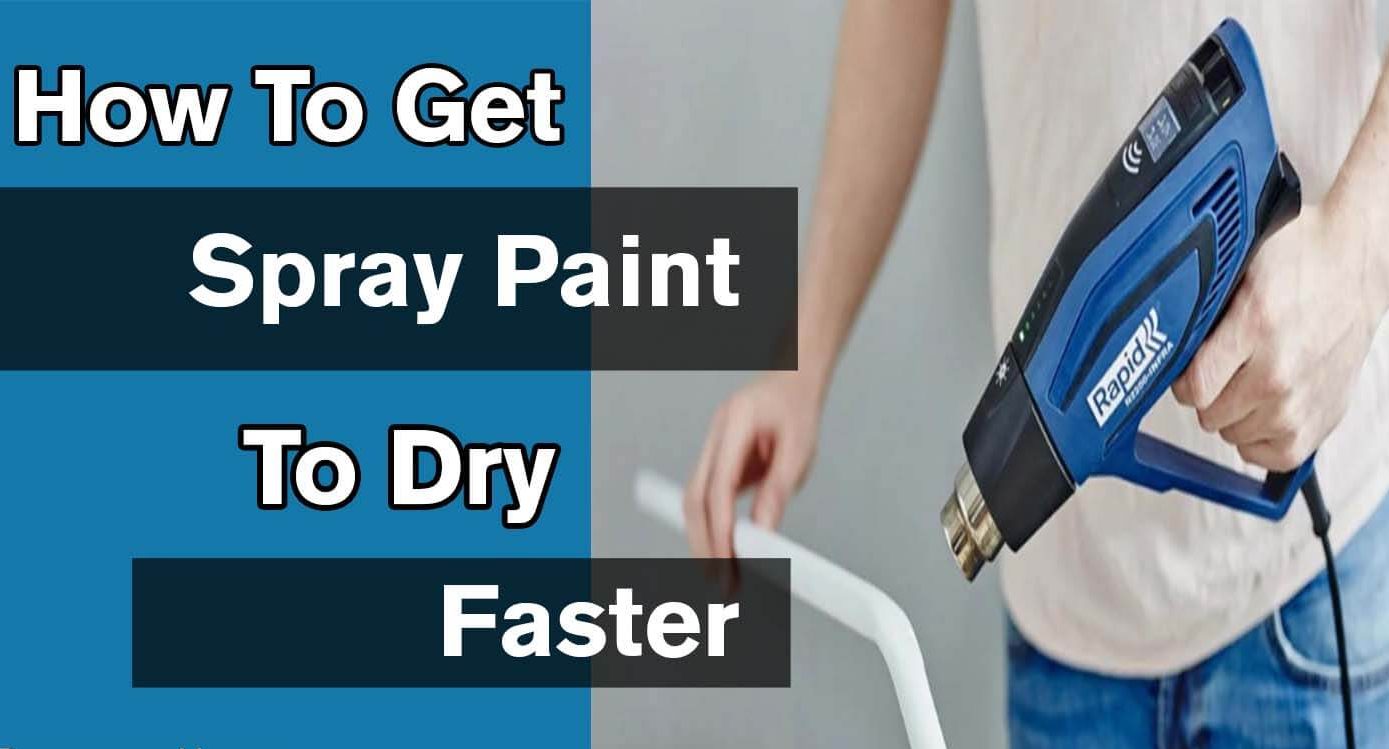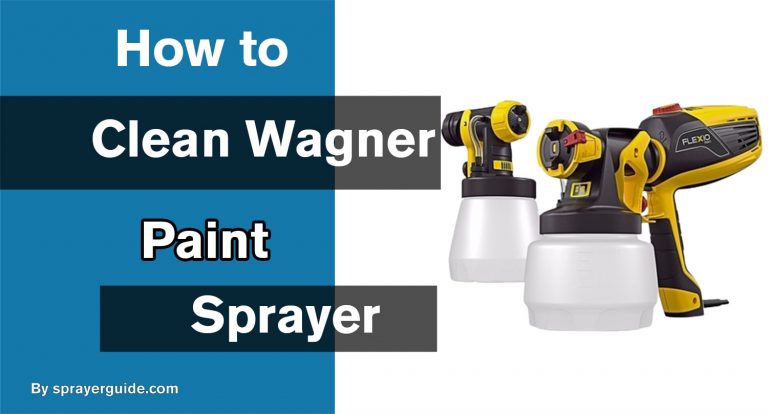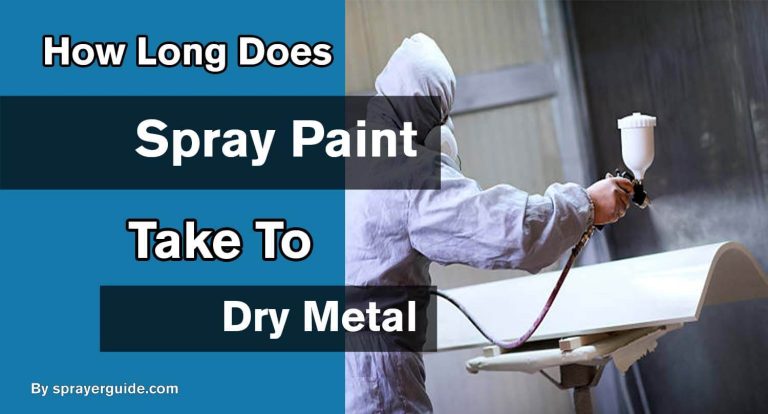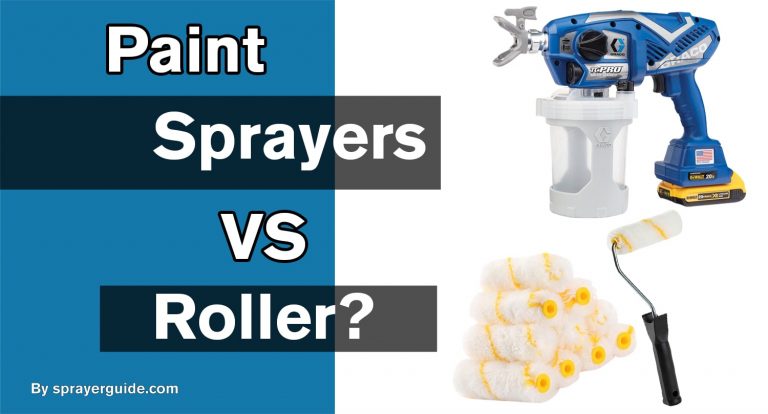Do you need to paint a project quickly but are stuck waiting for spray paint to dry? We’ve all experienced the frustration of having to postpone working on a project due to unanticipated delays. Fortunately, you no longer have to wait indefinitely. This article will show some simple yet effective solutions for reducing spray paint drying time without sacrificing quality or durability. Our tips apply to furniture, metal objects, plastic parts, and any other object in your home or workshop that needs to be painted! Let’s start finishing your projects faster today with shorter drying times and no extra work!

How Long Does It Take For Spray Paint To Dry?
Different factors can affect the drying time for spray paint, but generally, you can expect it to take anywhere from 20 minutes to 24 hours to dry fully. Factors such as:
The type of spray paint used:
Enamel-based spray paints can cure up to 24 hours, while acrylic and other water-based paints can dry in as little as 20 minutes.
Temperature and humidity levels will also affect drying time:
High temperatures and low humidity accelerate the paint drying process, while lower temperatures and higher humidity slow it down.
The number of coats applied:
Adding additional layers will add to the overall drying time, so ensure adequate time between each coat for the best results.
The thickness of the layer applied:
Applying multiple thin coats is often recommended to avoid drips or runs that could disturb the finish of your project, but thicker coats will take longer to dry.
The surface you’re painting on:
Smooth, non-porous surfaces like metal or glass are often easier to paint and require less drying than porous surfaces like wood.
Lighting conditions:
Direct sunlight will speed up the drying process, while dark or shady locations may slow it down.
Airflow in the room:
Good ventilation can help speed up drying by allowing moisture and solvents to evaporate faster.
Quality of the spray paint used:
Premium brands typically offer more consistent results and better performance, so they tend to dry faster than lower-quality products
If a top coat is applied:
Applying a top coat of a clear sealant or varnish will help to protect the spray paint from fading and damage, but it can also add to the overall drying time.
How often do you shake the can before spraying:
Shaking the can helps mix the ingredients and ensure even coverage, but too much shaking could cause air bubbles that will take longer to dry.
Overall, follow the instructions on your chosen spray paint product for the best results and optimal drying times. You’ll enjoy beautiful results with proper preparation and safety precautions in no time!
How to Make Spray Paint Dry Faster
One of the most frustrating aspects of spray painting is waiting for it to dry. If you’re in a hurry, there are ways to speed up the drying process. Here are several tips for making your paint dry faster:
Apply thin coats:
Applying too much paint at once can lead to slower drying times as the thicker coat will take longer to dry completely. Use light and even coats during your painting project to reduce drying time.
Use a blow dryer or heat gun:
Using a blow dryer or heat gun can help speed up evaporation and provide quicker results than air drying alone. It’s important not to get too close when using either tool, as the heat can cause your paint to bubble or blister.
Use a fan:
A fan is a great way to help circulate air in the painting area and dry your project faster. Just make sure you don’t point it directly at the painted surface, as this may cause dust particles to get stuck on the fresh coat of paint.
Implement an oven cure:
If you’re working with aerosol spray paints, such as those used for automotive projects, you can use an oven to speed up drying times without compromising quality. Place your project in an oven preheated 150–200 degrees Fahrenheit (65–93 Celsius) for approximately 20 minutes per side. Afterward, allow it to cool before handling.
Choose a warm, dry day:
Opt for an outdoor painting project on a hot, dry day with temperatures above 60 degrees Fahrenheit (16 Celsius). The warmth and low humidity will help the paint evaporate faster than usual.
Add retarder:
A retarder is a product you can add to your spray paint to slow the drying time and increase its flow. This is useful if you need extra time or have trouble keeping a steady hand while spraying. However, it’s important not to leave your work in this state too long as it could lead to an undesired effect such as cracking or fading.
Use fast-drying paint:
Consider using fast-drying paint if you’re looking for a quicker drying time. These are typically water- or oil-based paints with additives or unique ingredients to help speed up evaporation. Fast-drying paints can also be used on larger surfaces and can often be found in matte and glossy finishes.
Implement an accelerator:
An accelerator is a product that can be used to speed up the drying process when spray painting. It adds oxygen to the paint, allowing it to dry faster without compromising quality. While accelerators differ depending on the paint, most are applied after retarders have been added and before the final coat is sprayed.
Opt for epoxy primer:
An epoxy primer acts as a bonding agent between your project and the paint, helping it to dry more quickly. Epoxies are particularly useful if you paint over metal or wood surfaces.
Use a hairdryer:
If you don’t have access to a blow dryer or heat gun, using a hairdryer can still help speed up the drying process. Ensure not to get too close when using this tool, as the heat may cause your paint to bubble or blister.
Using these tips and tricks, you can reduce your drying time and increase the efficiency of your spray painting projects. For more information, consult a professional painter for additional advice.
How to Apply Thin Spray Paint Coats
Spray painting can effectively finish and protect a surface, but applying thin coats is essential. Thin coats of spray paint will not only look better, but the coat should also last longer – so it’s vital to take your time when spray painting.
Prepare the Area:
Before you start spray painting, make sure that you prepare the area as best as possible. Cover surfaces around the area with plastic or newspaper to prevent accidental overspray. Additionally, wearing a face mask and gloves might be helpful if needed.
Set Up your Spray Paint Can:
Now, take hold of your spray paint can and shake it according to instructions before using – this will help ensure an even coat when spraying. Make sure to use a light grip on the can and use your index finger to press down on the nozzle while keeping your other fingers securely wrapped around it – this will give you better control over the can’s movements.
Maintain Proper Distance:
Position the can at least 8 inches from the surface and keep your arm straight. Do not move only your wrist to paint; use a slow back-and-forth motion of your whole arm. Moving too fast might cause inconsistencies on the surface which will spoil the evenness of the coat.
Apply Even Pressure:
When spraying, applying even pressure across all painted surfaces is vital. This will ensure you get consistent coats of spray paint and avoid any patches or missed spots on the surface.
Final Touches:
Once you have finished painting, let the area dry before touching it or covering it up. This should be done in an open area with good ventilation to prevent respiratory issues from the fumes.
Spray paint might require practice and patience, but if you follow these steps and use the proper techniques, you can achieve a nice thin coat on whatever surface you are working on. Don’t forget always to wear protective gear when necessary too!
Frequently Asked Questions:
Spray paint on plastic will typically dry to the touch within 30 minutes. However, it is best to wait 24 hours before using or touching the painted surface to ensure the paint is challenging and cured.
Rustoleum will typically take 2-4 hours to dry. However, it is essential to wait 24 hours before touching or using the painted surface, as this will ensure that the paint has been fully cured and hardened.
Spray paint on metal will typically dry to the touch within 10 minutes. However, it is essential to wait 24 hours before touching or using the painted surface, as this will ensure that the paint has been fully cured and hardened.
Spray paint on wood will typically dry to the touch within an hour. However, it is essential to wait 24 hours before touching or using the painted surface, as this will ensure that the paint has been fully cured and hardened.
Clear-coat spray paint can take 12-48 hours to completely dry and set. Again, waiting 24-48 hours before touching or using the painted surface is essential to ensure the paint has been appropriately cured and hardened.
Final Note:
Finally, remember that proper ventilation and temperature are critical for quickly drying spray paint. If spraying inside, keep the windows open or a fan running to circulate air and exhaust fumes from the paint cans. Remember the weather conditions when spraying outside; if it’s cold outside, your spray paint will take longer to dry; if temperatures are higher than usual (or you’re painting in direct sunlight), drying time should be sped up. Remember these tips and use safe painting techniques on your next project to achieve quick-drying results.
Read More:
- How Long Does Primer Spray Paint Take To Dry
- How To Spray Paint Wood Chairs
- How To Thin Water-Based Paint For Roller
- How Long Does Spray Paint Take To Dry Metal
- Is It Better To Spray Or Roll the Interior Paint
- Does A Paint Sprayer Use More Paint Than A Roller
- How To Thin Water-Based Paint For Spraying
- How To Clean Wagner 350 Paint Sprayer
- How To Paint A Textured Ceiling With A Roller
- Which Is Better, Air Or Airless Paint Sprayer
- How To Use Hvlp Spray Gun
- How Long Does Spray Paint Take To Dry On Cardboard
- Graco Magnum Prox17 VS X5






